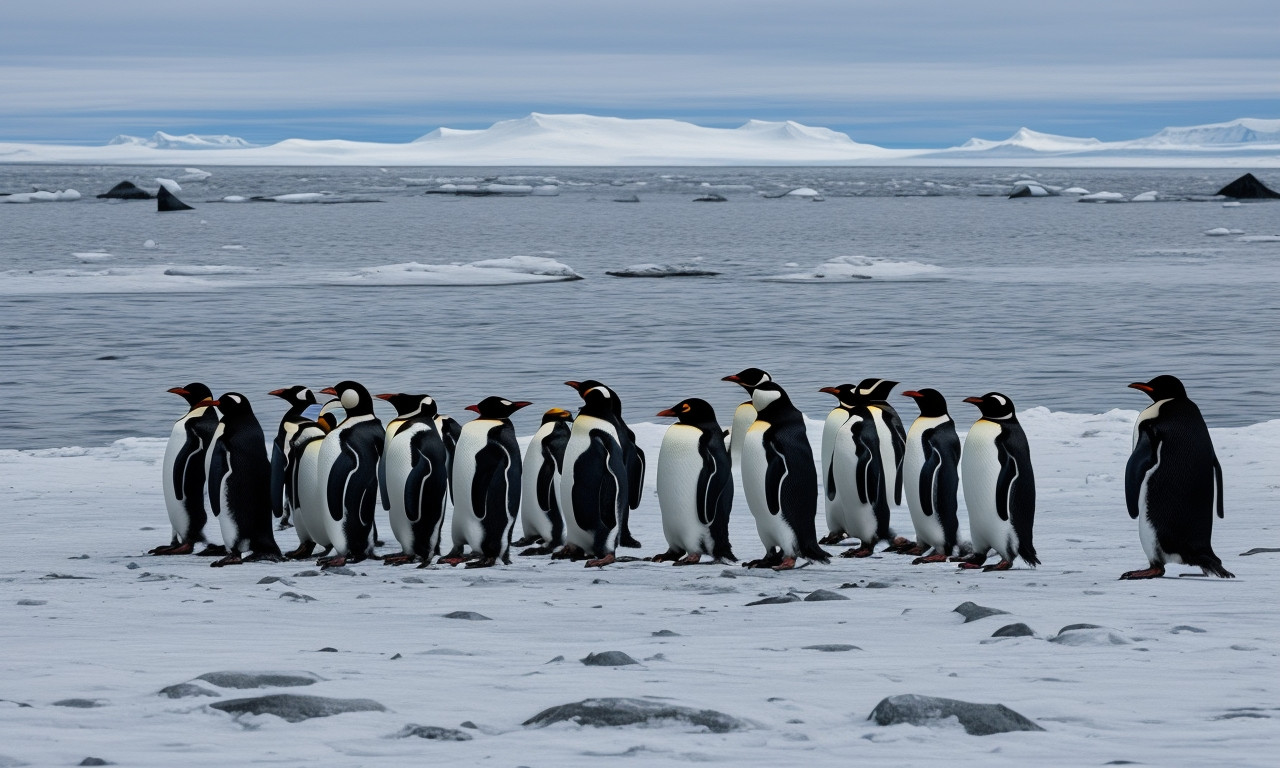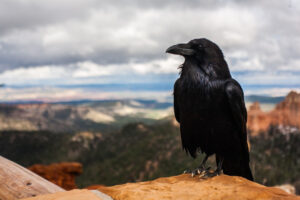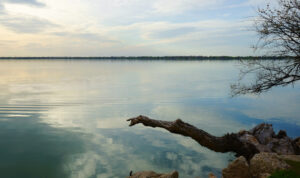Are There Penguins In Alaska? Discover The Surprising Truth! Prepare to unravel one of the most intriguing wildlife mysteries that has left many curious minds buzzing. Journey with us as we dive into the icy realms and enchanting lore surrounding Alaska’s bird population. From the frosty shores to the chilly waters, could the adorable tuxedo-wearing inhabitants actually be frolicking in the Alaskan wilderness? Join us in this fascinating exploration that could change everything you thought you knew about these endearing seabirds. Don’t miss out on the eye-opening revelations that await!
Do Penguins Live In Alaska?
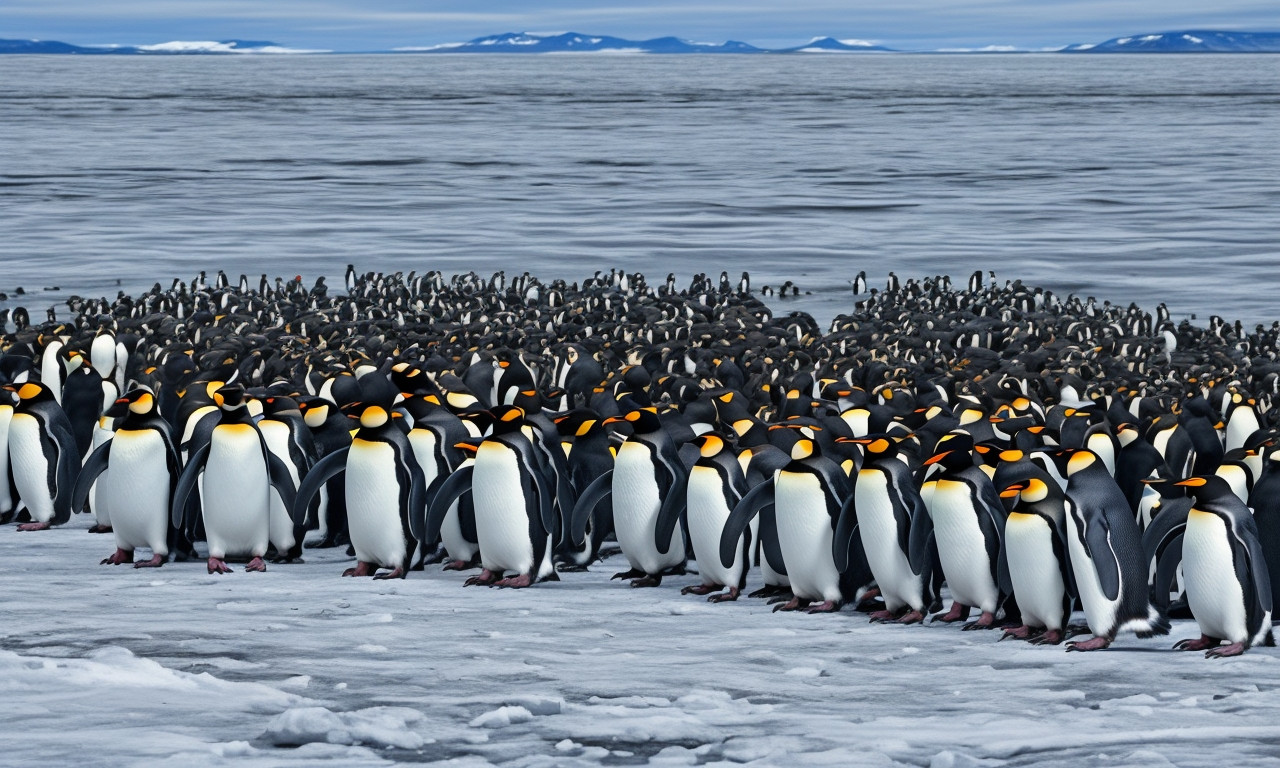
Contrary to popular belief, penguins do not live in Alaska. Although Alaska is known for its frigid temperatures and abundant wildlife, these iconic birds are not part of the northern state’s fauna. Penguins primarily dwell in the Southern Hemisphere, with the majority of species found in Antarctica, South Africa, Australia, and South America. The common misconception that penguins and polar bears (which do reside in Alaska) inhabit the same regions likely arises from their shared affinity for icy environments. However, these fascinating flightless birds are exclusively southern dwellers.
The question "Do penguins live in Alaska?" might stem from their portrayal in various media, which often romanticize these creatures amidst snow-covered landscapes. Yet, in reality, penguins have evolved to thrive in regions far from the Arctic Circle. Alaska, despite its cold climate, lacks the specific environmental conditions necessary for penguin survival, such as the unique marine ecosystems that support their diet primarily consisting of fish, krill, and squid.
Visitors to Alaska can still experience an incredible array of wildlife, from majestic whales to the formidable grizzly bears, but will not find penguins amongst the region’s inhabitants. For those eager to observe penguins in their natural habitat, venturing to the Southern Hemisphere is essential.
Penguins Gone Astray
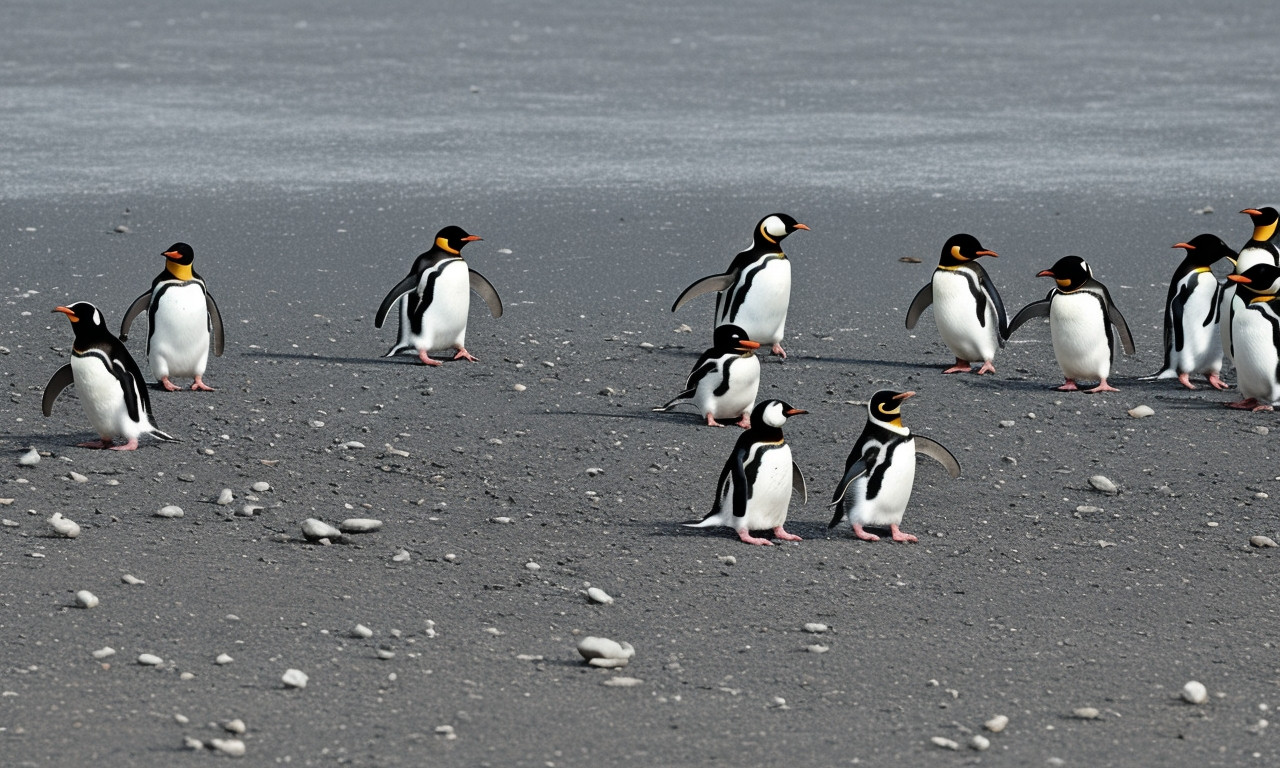
While Alaska and Antarctica share frigid climates, the question remains: Are there penguins in Alaska? The surprising truth reveals that penguins, known primarily as residents of the Southern Hemisphere, have strictly adapted to environments far from the northern reaches of Alaska. However, the idea of "Penguins Gone Astray" isn’t entirely unfounded due to occasional zoo exhibitions or even rare migratory appearances, though these instances are exceptionally rare and typically involve human intervention.
The ecological makeup of Alaska is suited for other unique bird species like puffins and murres, who thrive in the northern chill. Puffins, often mistaken for penguins due to their striking appearance and similar plumage, are a common sight across Alaskan coastlines and cliffs. These seabirds add to the confusion, prompting many to ponder whether penguins could indeed be a fixture in Alaska’s avian landscape. Despite these misconceptions, the habitats and biological niches of penguins and puffins remain distinct.
In summation, the notion of "Penguins Gone Astray" in Alaska is largely a myth, perpetuated by visual similarities to other northern birds. While the cold terrains of Alaska might seem ideal, the natural distribution of penguins keeps them firmly in the Southern Hemisphere, leaving Alaska to its native, equally fascinating inhabitants.
Egegik and Angela

When pondering whether there are penguins in Alaska, one must consider the regional wildlife. While Alaska is well-known for its rich and diverse fauna, penguins are actually native to the Southern Hemisphere and are not found in the northern regions of the globe. However, Alaska is home to a fascinating array of bird species that thrive in its cold, maritime environments.
Take Egegik, for example, a small fishing village located on the shores of Bristol Bay. Egegik, with its rich marine life, plays host to numerous seabirds such as puffins and murres, but sadly, no penguins. The climate and northern latitude make it an unsuitable habitat for these flightless birds known for their southern polar residency.
Conversely, Angela, a wildlife enthusiast and researcher based in Alaska, has dedicated years to studying the avian species of this region. Angela’s ongoing research involves documenting the migratory patterns of birds along the Alaskan coastline, offering insights into how various species adapt to the extreme conditions. Her findings continue to underscore the absence of penguins in Alaska, while highlighting the incredible diversity of other local birds.
Though penguins do not inhabit Alaska, the state’s unique wildlife continues to captivate those who explore its natural wonders. Egegik and Angela are just two examples that demonstrate the richness of Alaska’s avian life, which continues to inspire and intrigue wildlife enthusiasts around the globe.
Birds That Look Like Penguins
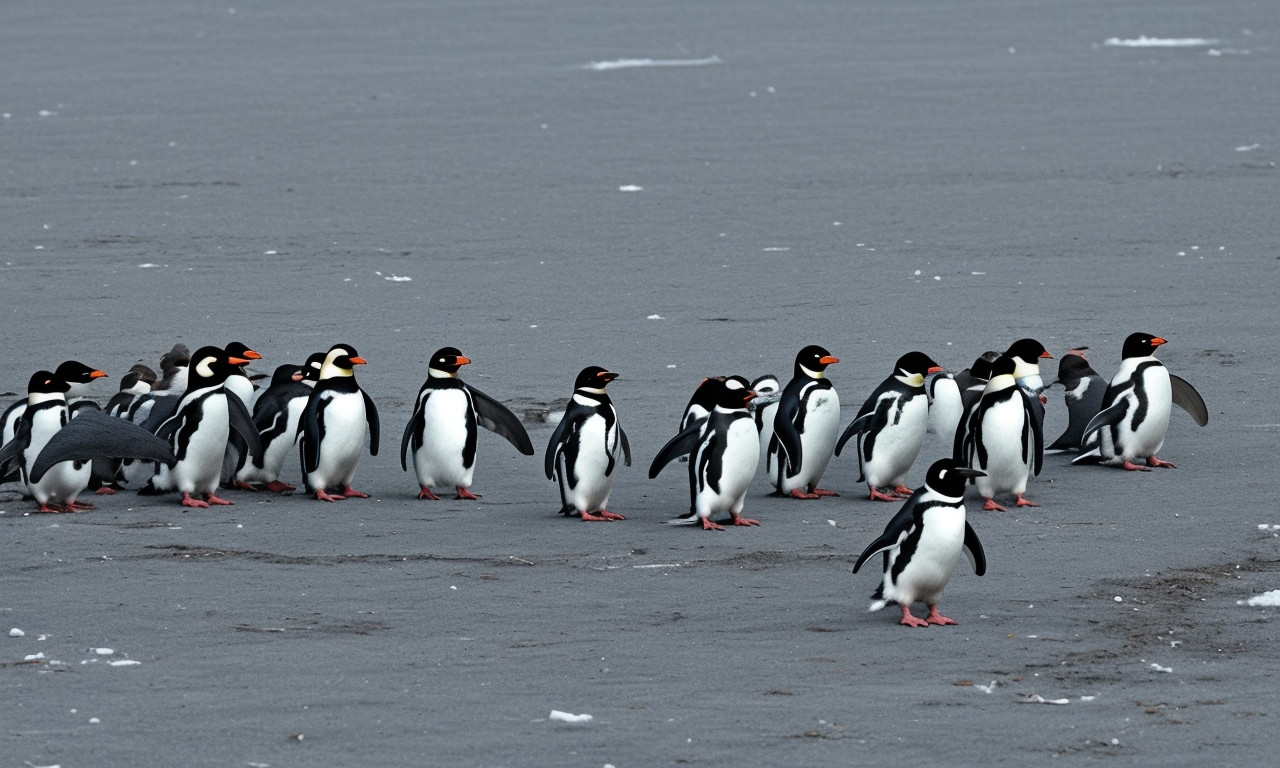
Many people wonder if there are penguins in Alaska, especially given the state’s chilly, polar conditions. The surprising truth is that there are no wild penguins in Alaska. Penguins are native to the Southern Hemisphere, predominantly found in Antarctica, South America, Africa, Australia, and New Zealand. However, Alaska is home to several fascinating birds that look like penguins, most notably the puffins.
Puffins, also known as "clowns of the sea," are seabirds with striking black and white plumage and colorful beaks, somewhat resembling penguins. They are commonly found along the coastal cliffs of Alaska, where they nest and search for fish in the Arctic waters. Despite their similar appearance, puffins and penguins belong to entirely different bird families and have adapted to their respective environments in unique ways.
Another bird that might be mistaken for a penguin in Alaska is the murre. Murres are black and white seabirds that also share the same sleek and streamlined body shape as penguins. They are skilled divers and can be seen swimming in northern waters, often forming large colonies on rocky cliffs.
While there are no true penguins in Alaska, you can still encounter birds that look like penguins, offering a glimpse into the fascinating world of Arctic seabirds.
Horned Puffin
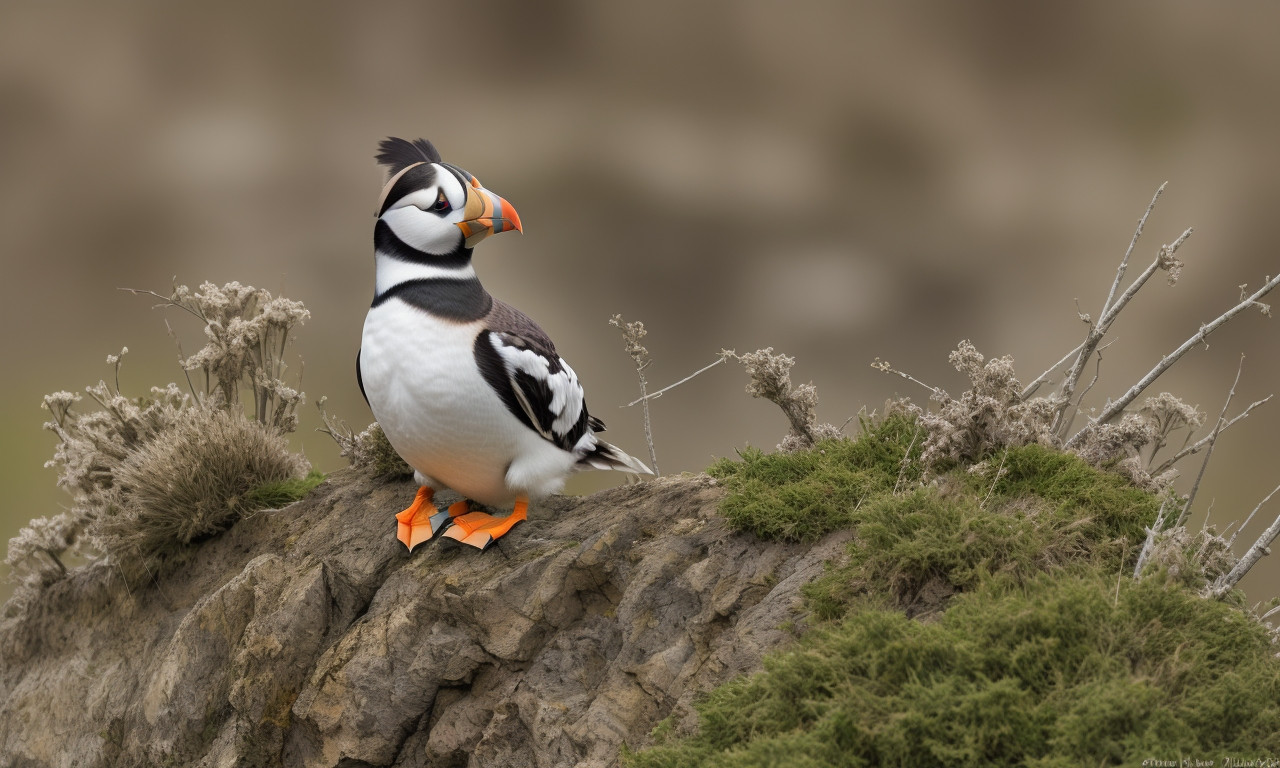
Alaska’s breathtaking landscapes and diverse wildlife often spark curiosity about its inhabitants, leading many to wonder, "Are there penguins in Alaska?" The surprising truth is that, despite its icy environment, Alaska is not home to penguins. Penguins are native to the Southern Hemisphere, with most species residing in Antarctica. However, bird enthusiasts in Alaska can delight in spotting another captivating avian species – the Horned Puffin.
The Horned Puffin is a fascinating seabird that shares some visual similarities with penguins, such as its black and white plumage and upright posture. Named for the small, horn-like projections above its eyes, this puffin is well-adapted to the cold waters of the North Pacific. During the breeding season, Horned Puffins nest in rocky cliffs along Alaska’s coastline, creating a spectacular sight for nature watchers. Unlike penguins, Horned Puffins are excellent fliers, capable of traveling long distances in search of food.
While Alaska may lack penguins, the presence of the remarkable Horned Puffin offers a unique and engaging wildlife experience. These striking birds captivate observers with their vibrant beaks and charismatic behavior, highlighting the rich biodiversity that thrives in Alaska’s rugged terrain and oceanic environments.
Common Murre
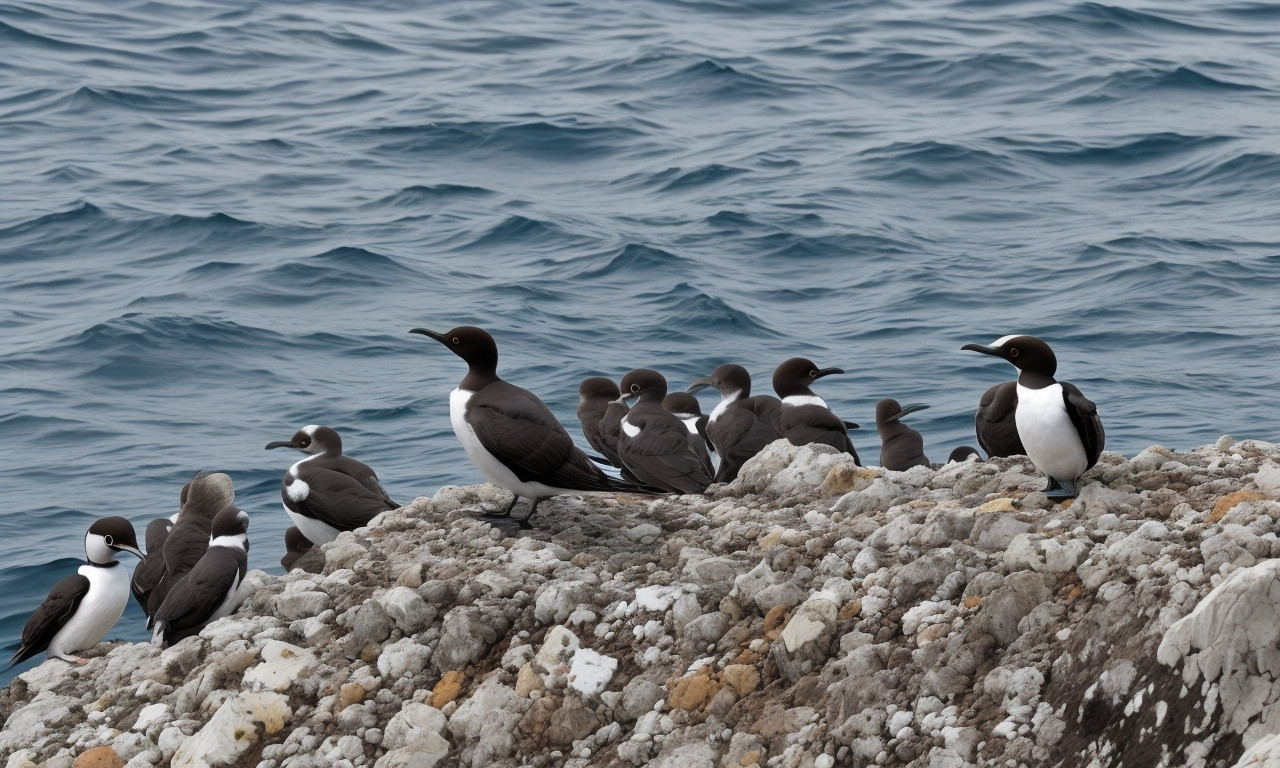
Alaska, with its rugged wilderness and breathtaking landscapes, is home to a diverse array of wildlife. Many people wonder if this northern wonderland houses penguins. The surprising truth is, penguins are not native to Alaska. Instead, the state’s frigid waters and rocky coastlines host a different kind of fascinating seabird—the Common Murre.
The Common Murre, often mistaken for a penguin due to its similar black and white plumage and upright stance, thrives in the chilly Alaskan environment. Resilient and adept at navigating both sea and sky, these remarkable birds are a prominent feature of Alaska’s marine ecosystem. They spend most of their lives in the ocean, coming ashore primarily to breed on steep, rocky cliffs where they lay their eggs.
These birds are exceptional divers, capable of plunging to depths of up to 600 feet in search of fish, squid, and crustaceans. Their torpedo-shaped bodies and powerful wings make them proficient swimmers, resembling the agile movements of penguins underwater.
While Alaska may not be home to the iconic penguins of the Southern Hemisphere, the presence of the Common Murre adds a unique charm to the region’s avian wildlife, drawing bird enthusiasts and nature lovers alike to this spectacular part of the world.
Dovekie
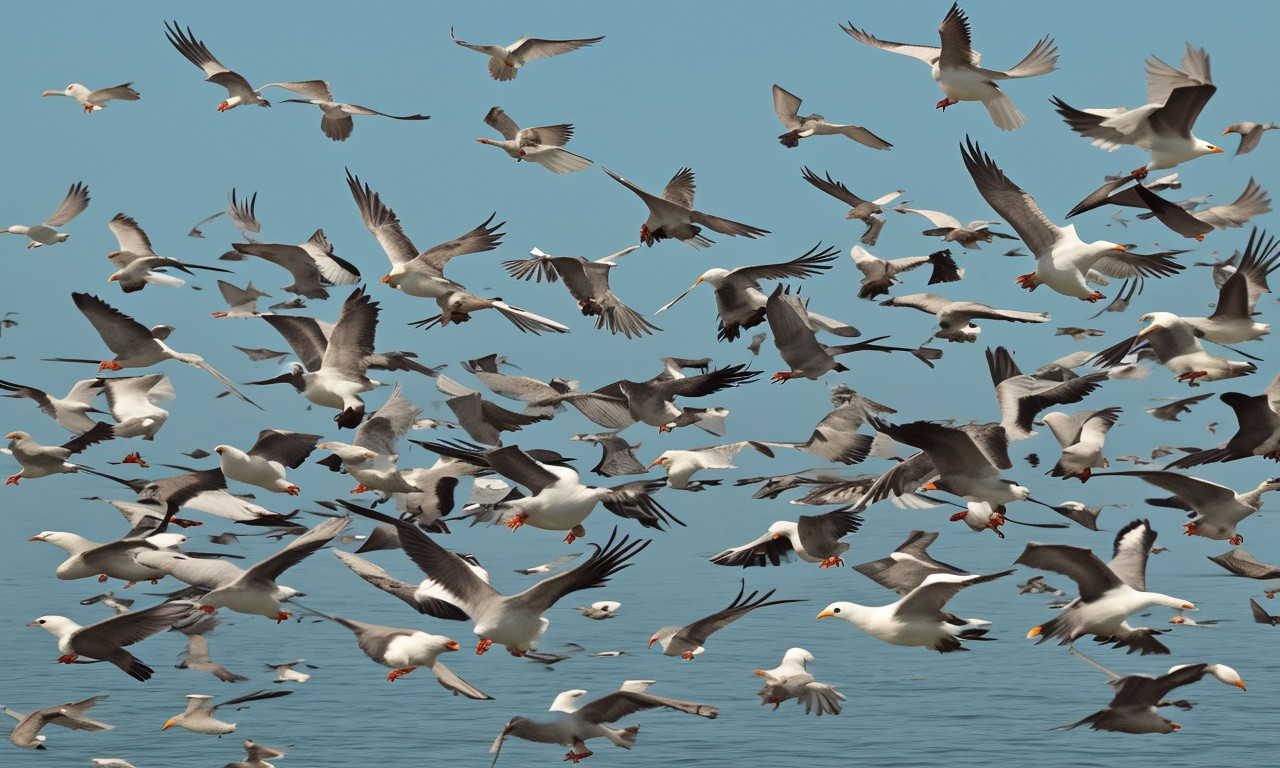
When considering penguins, many might mistakenly wonder if these charming birds reside in Alaska’s icy regions. In truth, penguins are exclusive to the Southern Hemisphere, primarily in Antarctica and other southern locales. However, Alaska has its own captivating, tuxedo-clad seabird: the Dovekie. Although the Dovekie isn’t a penguin, its appearance often leads to confusion. These small, black and white birds are adept swimmers and divers, much like penguins, and can be seen around the northern Atlantic, making their homes in Greenland, Iceland, and occasionally, further towards Alaska.
Dovekies are fascinating in their own right. They are part of the auk family and stand out with their plump bodies and short wings, specialized for their underwater hunting lifestyle. During winter, these birds can sometimes be observed along Alaska’s coastlines, especially when the sea ice retreats and food sources become more accessible. While they may not share the same fame as penguins, Dovekies play a significant role in their marine ecosystems by feeding on small fish and invertebrates.
So, while a quest to find penguins in Alaska proves fruitless, turning your attention to the charming Dovekie reveals a delightful alternative in this northern wilderness.
Thick-billed Murre
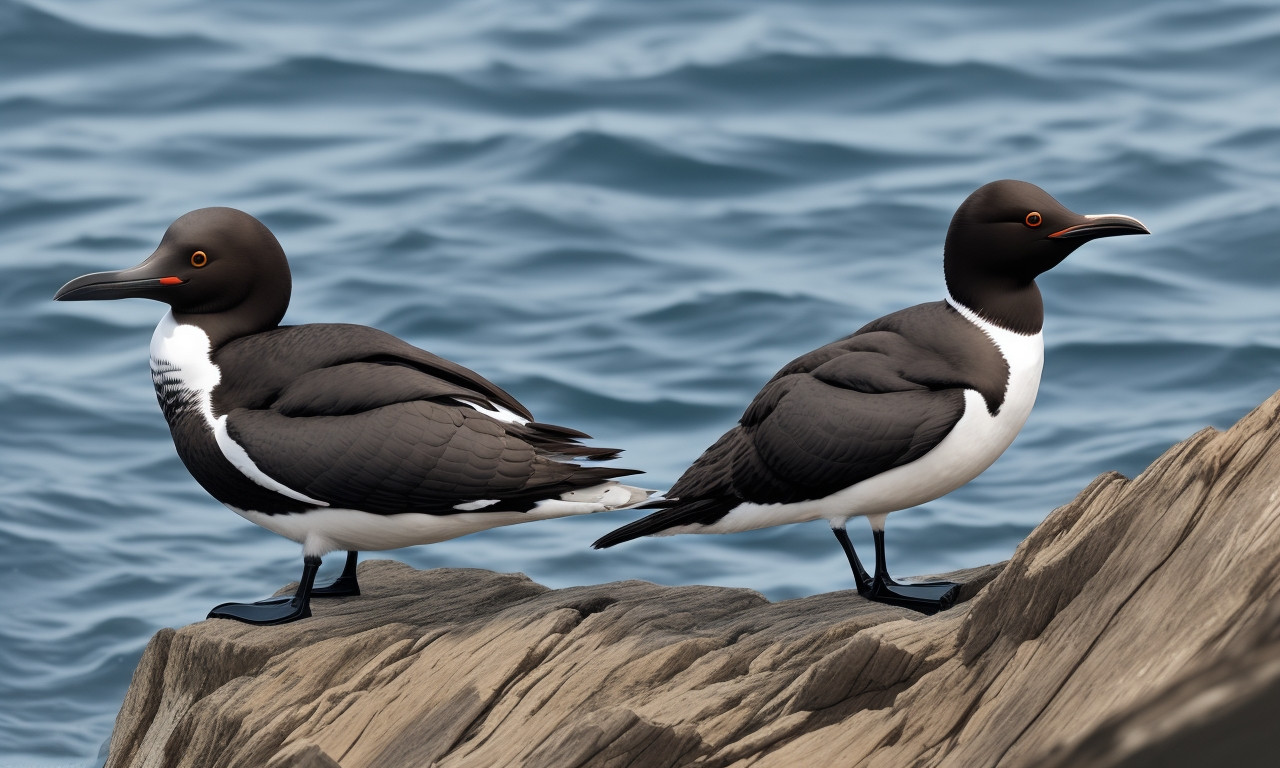
When pondering whether there are penguins in Alaska, it’s important to delve into the wildlife that thrives in this icy landscape. Surprisingly, while there are no penguins native to Alaska, the region is home to birds that resemble them in some aspects, particularly the Thick-billed Murre. These fascinating avian residents are often mistaken for penguins due to their similar black-and-white plumage and upright posture.
The Thick-billed Murre, part of the auk family, is specially adapted to the frigid Arctic environment. These birds gather in dense colonies along Alaskan cliffs, creating a spectacle that rivals any penguin rookery. Much like penguins, Thick-billed Murres are excellent divers, using their wings to ‘fly’ underwater in pursuit of fish and crustaceans, their primary diet. They can dive to impressive depths and spend a significant part of their lives at sea, enduring the harsh conditions of the North Pacific.
In conclusion, while Alaska may not host the iconic penguins of the Southern Hemisphere, the Thick-billed Murre offers a fascinating alternative, demonstrating similar ecological roles and behaviors. These resilient birds remind us of the incredible diversity and adaptability of life in the Arctic.
Where Do Penguins Actually Live?
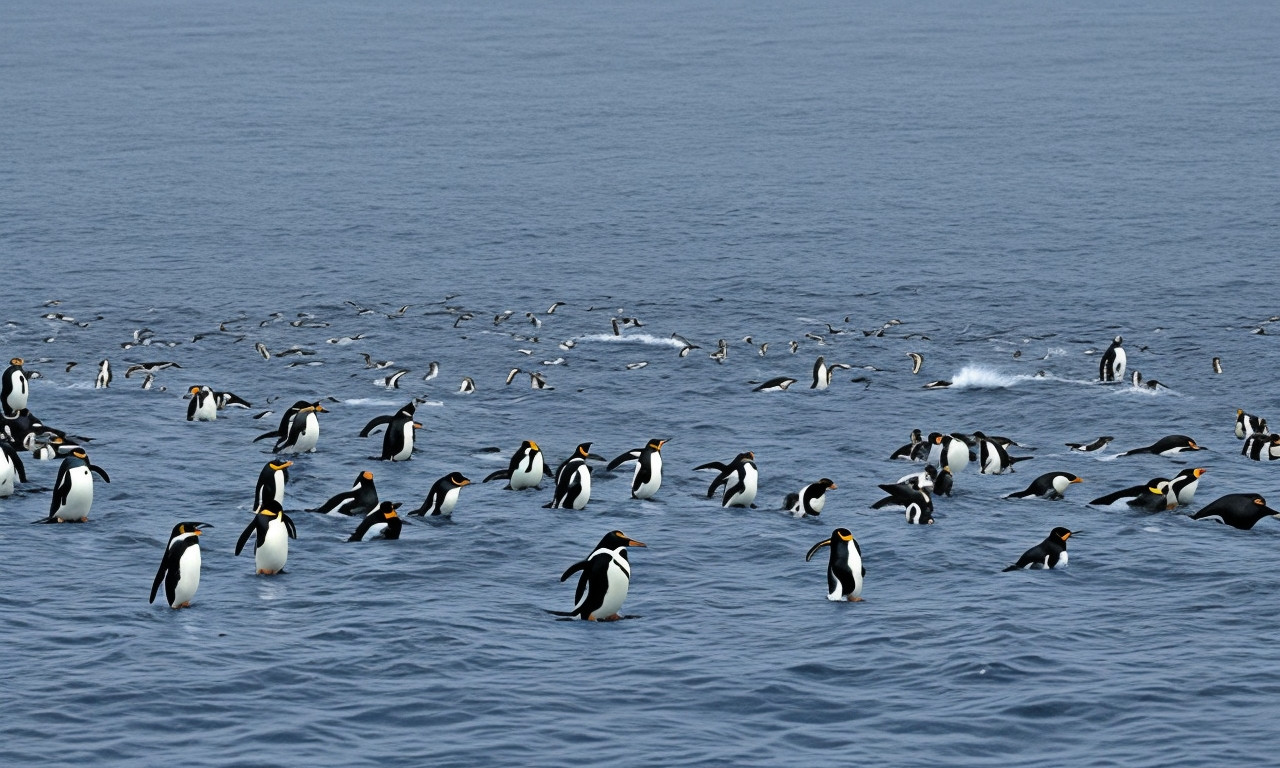
Many people wonder, "Are there penguins in Alaska?" It’s a surprising and fascinating question. Contrary to popular belief, when asking, "Where do penguins actually live?" the answer does not include Alaska. Penguins are primarily found in the Southern Hemisphere, with the vast majority residing in Antarctica. These flightless birds are well-adapted to cold climates, but they inhabit regions ranging from the icy Antarctic to the temperate coasts of South America, South Africa, Australia, and New Zealand.
The misconception that penguins live in Alaska may arise from images of other cold-weather birds, such as puffins and auklets, which do live in the Northern Hemisphere and share some visual similarities with penguins. However, their habitats and genetic backgrounds are distinct. Penguins have never naturally settled in Alaska due to the vast distances and different oceanic conditions between their Southern Hemisphere homes and the northern regions.
Understanding "Where do penguins actually live?" can enrich our appreciation for these unique creatures and mitigate common misconceptions. Penguins thrive in environments that provide them with the necessary resources and conditions, predominantly in the Southern Hemisphere. So, if you’re hoping to see penguins, a trip to Antarctica or the southern coasts of continents like Africa and South America is your best bet.
Do Penguins Ever Move From Their Preferred Habitats?
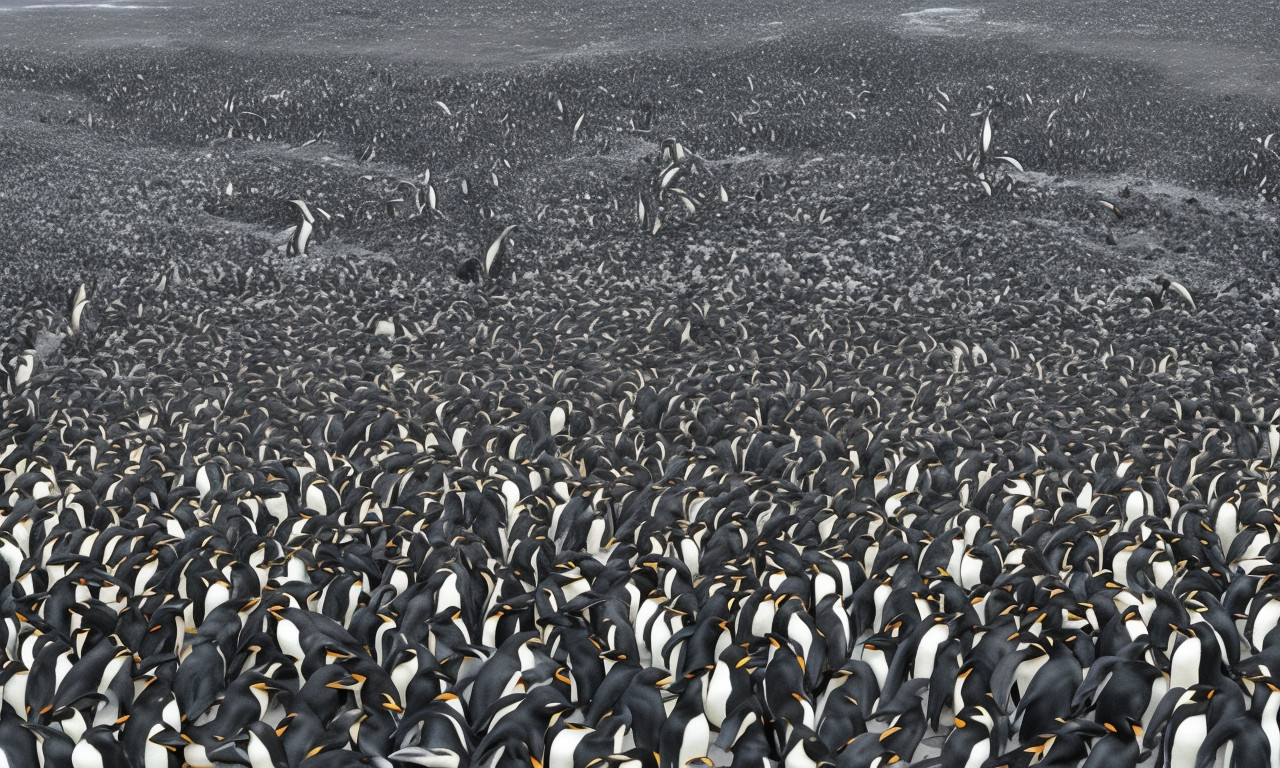
Penguins are fascinating creatures known for their tuxedo-like appearance and unique behaviors. When pondering the question, Are There Penguins In Alaska? Discover The Surprising Truth! It becomes essential to examine their habitats more closely. Typically, penguins thrive in the Southern Hemisphere, particularly in regions like Antarctica, South Africa, and parts of South America. These cold, marine environments provide the ideal conditions for their survival.
Although Alaska has a frigid climate similar to some penguin habitats, these birds are not native to the region. One might wonder, "Do Penguins Ever Move From Their Preferred Habitats?" The answer lies in the biological and environmental adaptations of these creatures. Penguins have evolved to survive specific conditions provided by their native habitats, including particular sea temperatures and food availability like krill and squid.
In rare cases, penguins might be found outside their typical zones, usually transported by humans to zoos or aquariums. However, in the wild, they do not naturally migrate northward to Alaska. Instead, they remain in their evolutionary homes where they can thrive. Thus, while Alaska’s environment may seem suitable, the absence of wild penguins there underscores their adherence to their preferred habitats.
Frequently Asked Questions
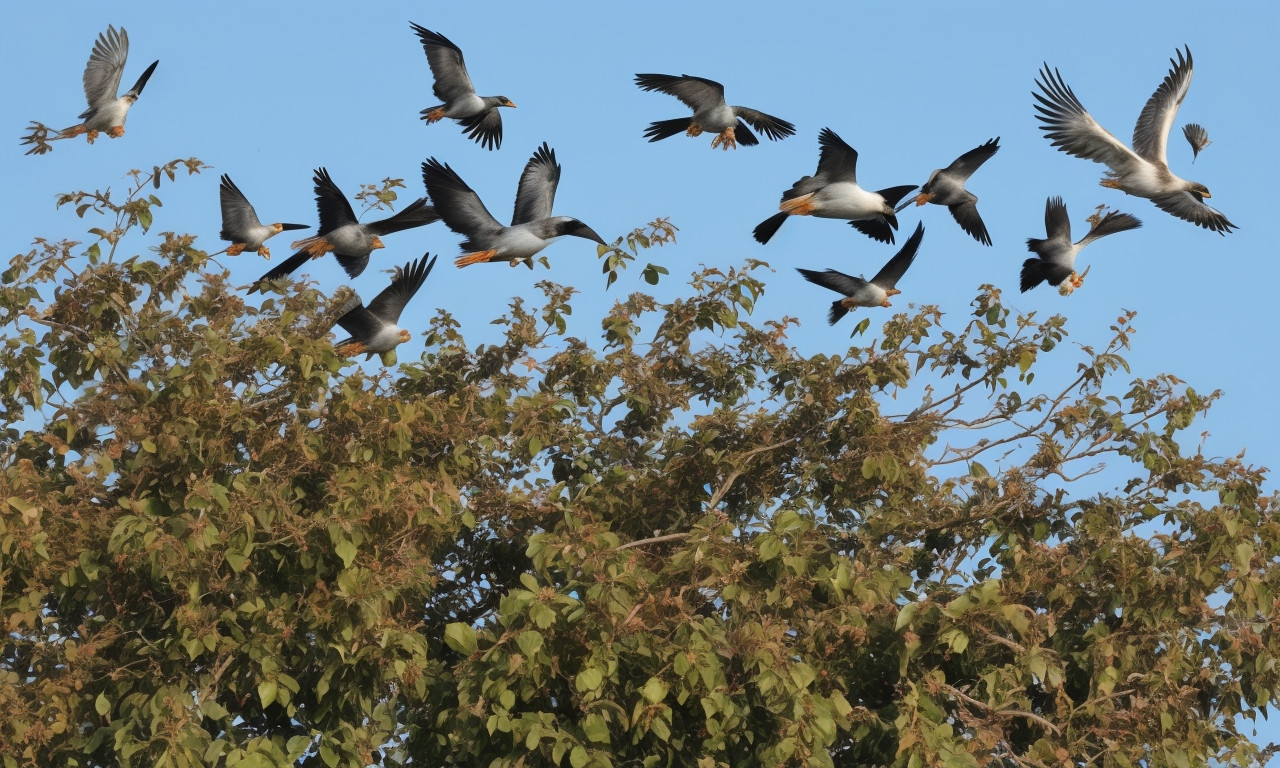
Discovering whether there are penguins in Alaska brings a world of curiosity and frequently asked questions. Contrary to popular belief, penguins do not inhabit the chilly regions of Alaska. Penguins are native to the Southern Hemisphere, primarily found in Antarctica, South Africa, Australia, New Zealand, and the coasts of South America. The Northern Hemisphere, including Alaska, is home to different seabirds like puffins, which are often confused with penguins due to their similar black-and-white appearance and aquatic nature.
Many frequently asked questions arise from the misconception that penguins live in the Arctic regions. People often wonder why penguins cannot thrive in Alaska despite its cold climate. The answer lies in the evolutionary history of penguins, which are adapted to the specific conditions found in the Southern Hemisphere. Another common question is whether you can see penguins in zoos or aquariums in Alaska. While it is possible to see them in captivity, their natural habitat will always be far removed from Alaska’s icy shores.
Addressing these frequently asked questions allows us to better understand the distinct habitats and behaviors of these fascinating creatures, debunking myths and enriching our knowledge about wildlife distribution across the globe.
Would it be possible for penguins to ever live in Alaska?
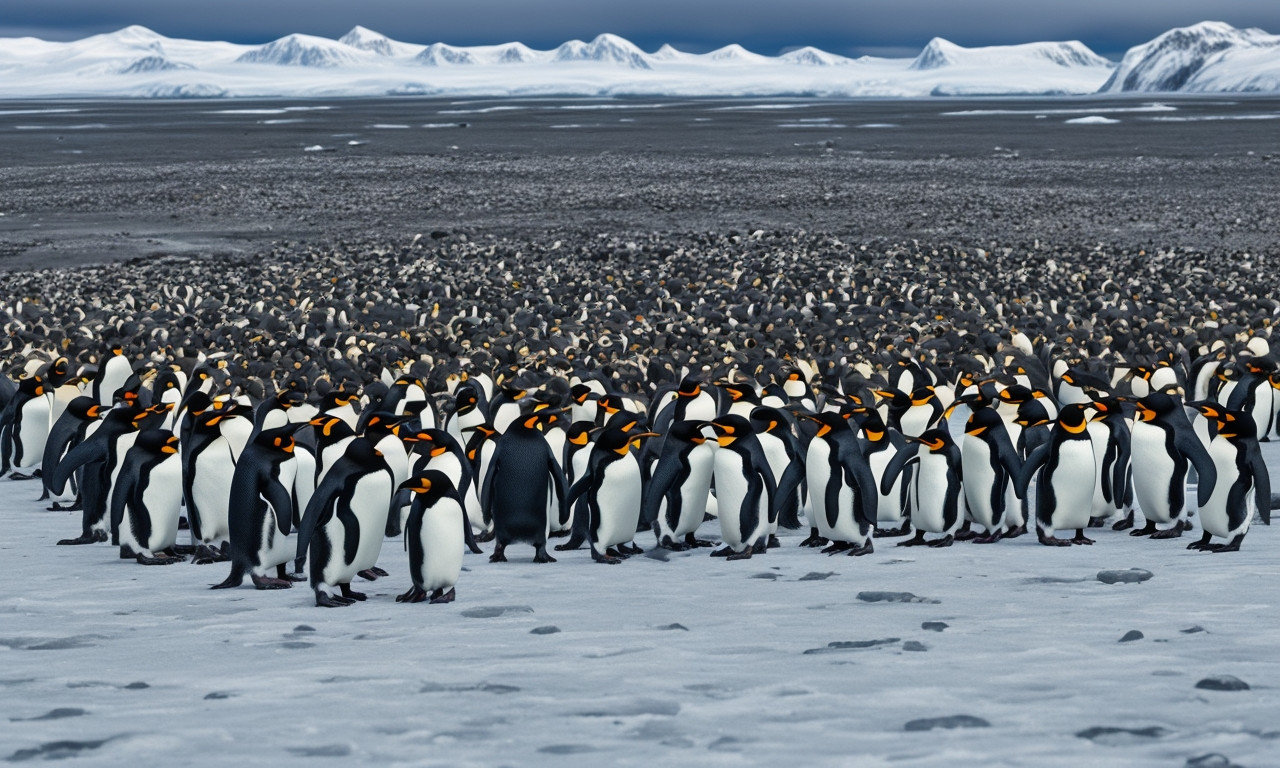
While Alaska may seem like a suitable habitat for penguins given its frigid temperatures and abundant ice, the reality is quite different. Penguins are native to the Southern Hemisphere and primarily inhabit areas such as Antarctica, the sub-Antarctic islands, and parts of South America, Africa, Australia, and New Zealand. Therefore, one might wonder, "Would it be possible for penguins to ever live in Alaska?" Geological and ecological factors play a significant role in determining the distribution of wildlife, and penguins have evolved to thrive in the southern polar regions, often needing specific conditions that are not present in the Northern Hemisphere.
The isolation of the Southern Hemisphere has allowed penguins to evolve without predators like polar bears, which call the Arctic home. This significant difference in predatorial presence is one of the reasons why penguins are found south of the equator and not in northern icy environments. Hypothetically, if penguins were introduced to Alaska, there would be considerable challenges, including competition for food and threats from unfamiliar predators. Hence, while it sparks the imagination to think of penguins in the Alaskan wilderness, their place in the ecosystems of the Southern Hemisphere remains crucial.
Can penguins fly?
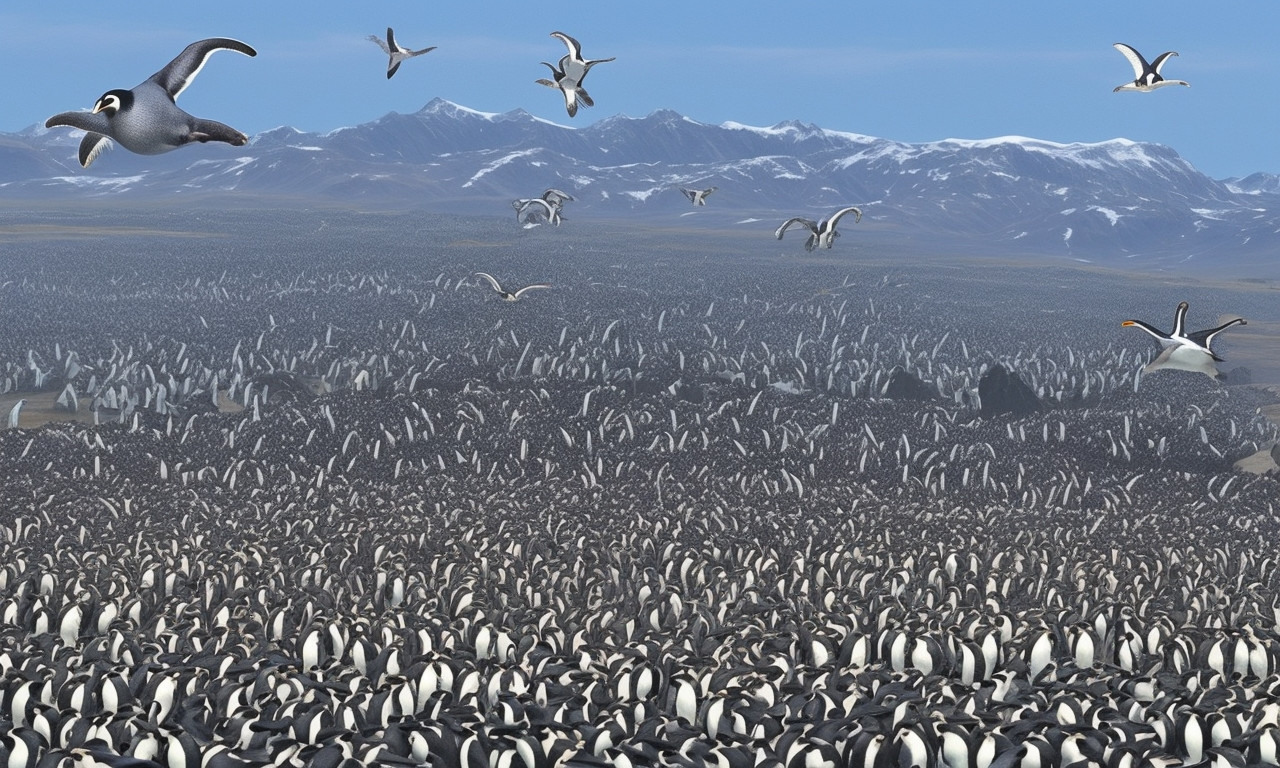
Many people harbor misconceptions about penguins, one of which involves their geographic distribution. A common question asked is: are there penguins in Alaska? To the surprise of many, the answer is no. Penguins are native to the Southern Hemisphere, primarily found in Antarctica and coastal regions of South America, Africa, Australia, and New Zealand. Despite popular belief, they do not inhabit the icy realms of the Arctic or Alaska.
Addressing another curious question: can penguins fly? Penguins, unlike many other bird species, have adapted perfectly to their aquatic environments. Their wings have evolved into flippers, making them adept swimmers but incapable of flight. These unique adaptations allow penguins to glide effortlessly underwater, enabling them to hunt efficiently for fish and other marine prey.
The persistent myth of penguins residing in Alaska likely stems from their association with cold climates. However, it’s crucial to understand that penguins are exclusively Southern Hemisphere birds. Instead, creatures like puffins and auklets inhabit Alaska’s coastal areas, often confused with their southern cousins due to their similar appearances. Thus, while the icy landscapes of Alaska might seem ideal for these charming creatures, penguins are nowhere to be found in the northern hemisphere, let alone Alaska.
How long can penguins travel?
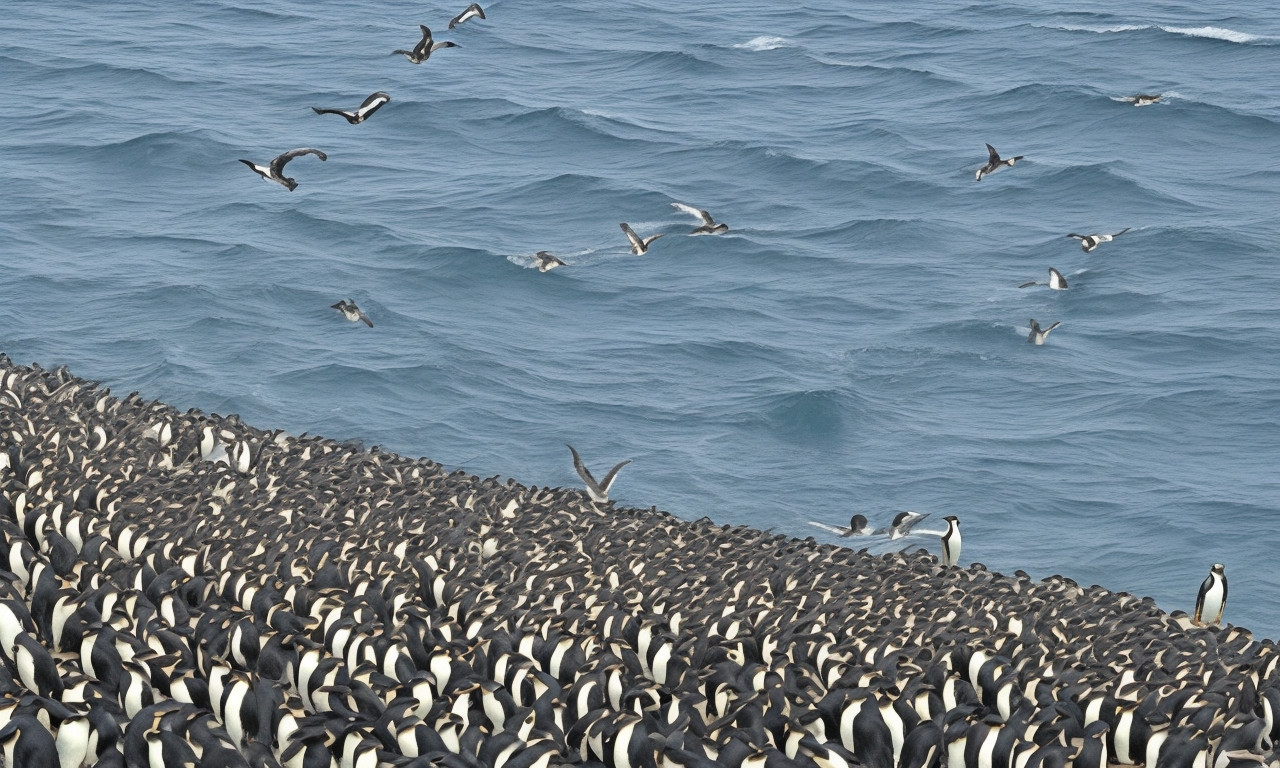
Despite the chilly climate, Alaska is not home to penguins. These charismatic black-and-white birds are native to the Southern Hemisphere, predominantly in Antarctica, but also in regions as far north as the Galapagos Islands near the equator. However, the question remains: How long can penguins travel? Penguins are excellent long-distance swimmers, thanks to their streamlined bodies and strong flippers.
Emperor penguins, for example, can dive up to 1,850 feet and remain submerged for more than 20 minutes. The Adelie penguin, another prolific traveler, can swim as far as 185 miles in search of food. Their impressive journeys are crucial for survival, as it allows them to find open waters and abundant feeding grounds.
Because they reside so far south, the likelihood of penguins naturally migrating to Alaska is virtually nonexistent. The cold waters off the Alaskan coast, while seeming perfect, are too distant for even the most adventurous penguin pilgrim. In essence, the natural barriers and sheer distances involved make Alaska an improbable destination. Penguins’ resilience and incredible travel capabilities are fascinating, yet their habitats remain firmly rooted far from the northern reaches of Alaska.

